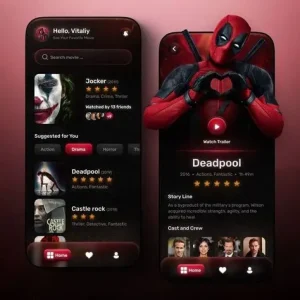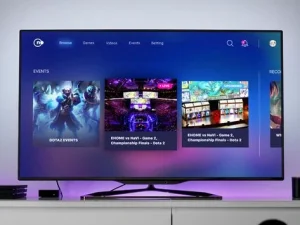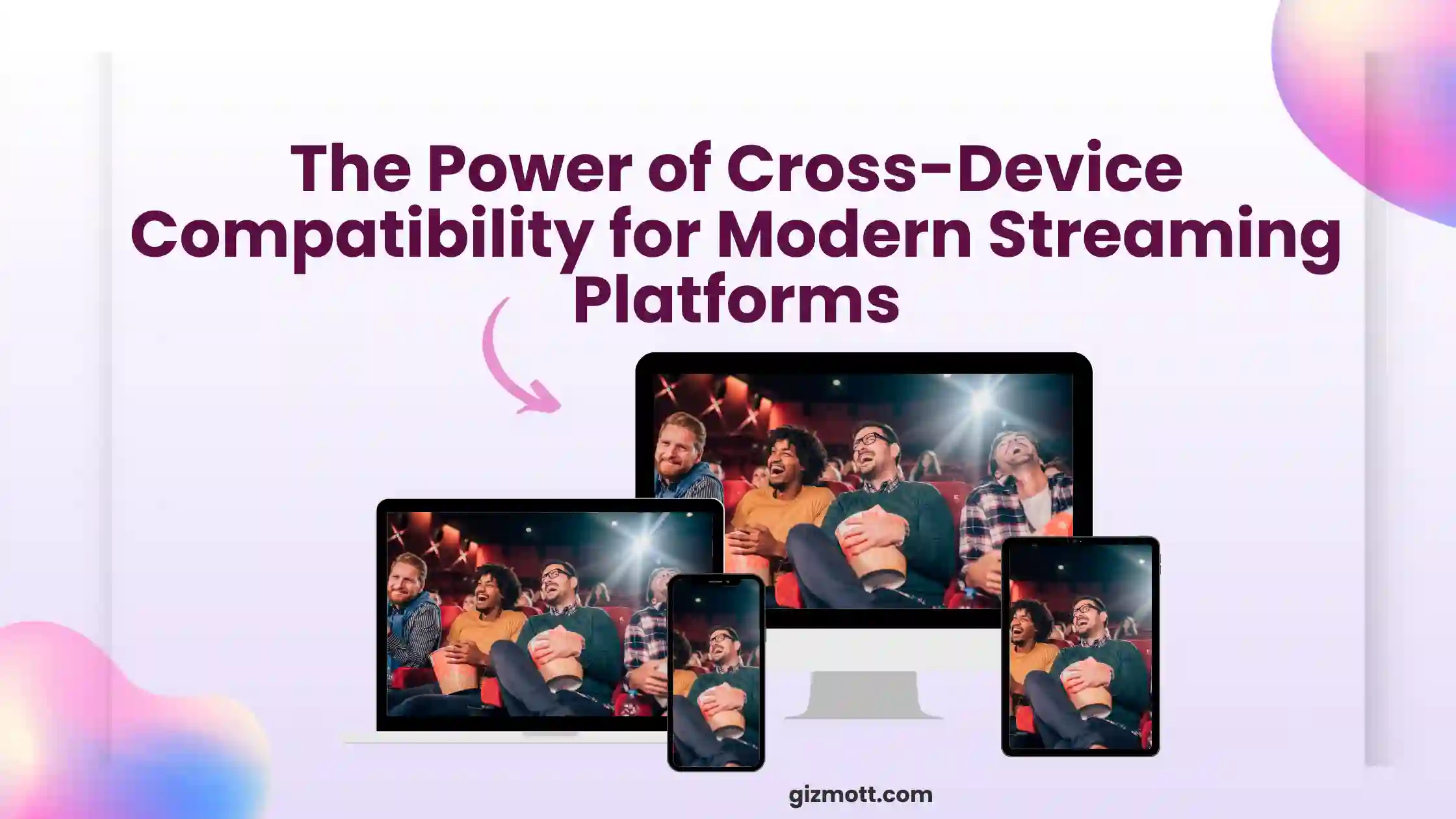When was the last time you stuck to just one device to watch your favorite show?
Chances are, you switched from your smart TV in the living room to your smartphone in bed — maybe even caught up on a few scenes at work on your laptop (we won’t tell!).
Today’s streaming users are everywhere, on every device.
And that’s why multi-device compatibility has become essential — not a luxury — for any streaming platform that wants to stay ahead in 2025.
Why Multi-Device Streaming Matters More Than Ever
Audiences now expect to watch what they want, when they want, on whatever device they prefer.
If your streaming app doesn’t offer smooth, seamless experiences across all screens — smartphone, tablet, smart TV, or web browser — you risk losing viewers faster than you gained them.
The Big Benefits of Cross-Device Streaming Compatibility
1. Keeping Viewers Engaged, No Matter the Screen
Imagine a user starting a movie on their TV, pausing halfway, and resuming right where they left off on their mobile.
That frictionless experience is what makes users stick around.
A cross-platform streaming app ensures your content fits naturally into the viewer’s lifestyle, not the other way around.
naturally into the viewer’s lifestyle, not the other way around.
2. Expanding Your Reach to Every Possible Audience
Different users have different device preferences.
Some prefer binging shows on a 55-inch Smart TV; others love quick videos on their phones.
Cross-device accessibility lets you tap into a broader, global audience.
By optimizing for mobile apps (iOS, Android), web browsers, Roku, Fire TV, and Apple TV, you’re making sure no user gets left behind.
3. Supercharging User Retention and Reducing Churn
The more flexible your platform, the more loyal your audience.
If users know they can access your streaming service anywhere, anytime, they are less likely to cancel subscriptions.
Cross-platform streaming apps lead to higher session durations, stronger brand loyalty, and ultimately better retention rates.
4. Boosting Monetization Opportunities Across Devices
More devices = more engagement = more revenue.
Whether your model is AVOD (advertising-based), SVOD (subscription-based), or TVOD (transactional), multi-device streaming increases ad impressions and upsells opportunities.
Advertisers love platforms that deliver a consistent experience across smartphones, tablets, smart TVs, and web apps.
5. Outshining Competitors in a Crowded Streaming Market
In 2025 and beyond, it’s not enough just to have content — your user experience must be flawless across every device.
Streaming giants like Netflix and Disney+ have set high expectations.
Your service must match or exceed that seamless experience to stay competitive.
What It Takes to Build a Future-Ready, Multi-Device Streaming Platform
Now, you might wonder —
“What should I focus on to make my streaming app truly device-friendly?”
Here’s the checklist:
➡️ Responsive Streaming App Design
Your app’s UI must automatically adjust to different screen sizes and resolutions — offering smooth navigation, easy browsing, and a beautiful viewing experience.
➡️ Adaptive Bitrate Streaming
Adaptive streaming technology ensures users get the best possible video quality based on their internet speed and device capabilities — all without constant buffering.
➡️ Cross-Platform Streaming App Development
Building dedicated apps for Android, iOS, Roku, Apple TV, Fire TV, and web browsers ensures your platform truly supports every device your audience uses.
➡️ Multi-Device Playback Synchronization
Users should be able to pause on one device and pick up on another without losing their spot.
Playlist syncing, watch history, and personalized recommendations must travel with the user across screens.
➡️ Continuous Testing Across Devices
Device fragmentation is real — Android TVs, Roku devices, iPads, iPhones, laptops — all have different specs.
Constant testing ensures your streaming app performs optimally across every major platform.
The Future of Streaming: Omnichannel or Nothing
The future belongs to streaming services that go beyond just mobile and TV.
With 5G expansion, smart cars, wearable tech, and connected homes, viewers will expect access anywhere, everywhere.
Platforms that prioritize device versatility and cross-platform user journeys today will dominate tomorrow.
Conclusion: Future-Proof Your Streaming Platform With Multi-Device Mastery
In today’s hyper-competitive streaming wars, multi-device compatibility isn’t optional — it’s survival.
Investing in responsive design, adaptive streaming, and cross-device synchronization can be the difference between building a lasting streaming brand or getting lost in the noise.
How Gizmeon and Gizmott Can Help You Build a Cross-Device Streaming Powerhouse
At Gizmeon, we understand what it takes to create future-proof streaming platforms.
Our flagship solution, Gizmott – OTT platform service provider is designed to deliver seamless, adaptive, cross-device streaming experiences that users today expect — and demand.
✅ Multi-device streaming app development
✅ Adaptive bitrate streaming implementation
✅ Smart TV, mobile app, and web streaming service builds
✅ Content synchronization across devices
✅ Advanced streaming monetization strategies
✅ AI-driven personalization and content discovery with Gizmott AI
Whether you’re launching your first app or scaling up, Gizmeon and Gizmott are your trusted partners.
Ready to build a streaming platform users love — on every screen?
Contact Gizmeon Today for a Free Consultation!
FAQs
Q1: What is multi-device compatibility for streaming platforms?
It means ensuring your streaming service works seamlessly across different devices like smartphones, smart TVs, tablets, laptops, and gaming consoles — without any loss of quality or user experience.
Q2: Why is cross-device streaming important?
It boosts user engagement, improves retention, increases revenue opportunities, and helps you reach wider demographics.
Q3: How can I make my streaming platform cross-device compatible?
Focus on responsive app design, adaptive streaming, multi-device synchronization, and invest in cross-platform development expertise like Gizmeon offers.




